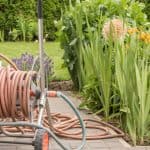Last updated on May 4th, 2022
Our site is reader supported, this means we may earn a small commission from Amazon and other affiliates when you buy through links on our site.
Daylilies are also known as Hemerocallis and they are a great plant to grow in the UK, particularly because of their versatility and ability to withstand a range of growing and soil conditions. They can tolerate a lot of weather fluctuations that UK gardens have to contend with on a regular basis, but more importantly, you can grow them in containers. Container-grown Daylilies will work very well as long as you have the proper drainage holes and the right soil conditions, which means moist free-draining compost.
This is particularly well suited to circumstances where gardeners might need to move a pot into direct sunlight and follow the sun around the garden during the day or in conditions where the soil is really not suitable and is quite difficult to grow Daylilies in your garden, meaning it is much easier to simply grow them in a pot rather than trying to amend the soil.
Choosing the right pot for growing Daylilies
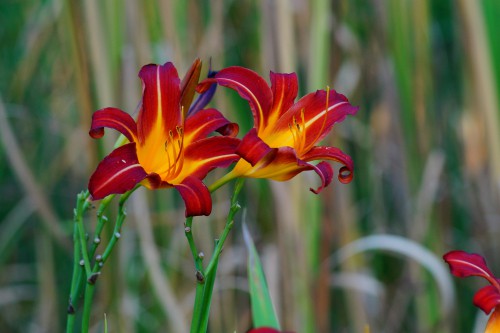
Choosing the right pots is important for Hemerocallis because if a Daylily doesn’t have enough space to grow, it will focus all of its energy on simply surviving and that means you won’t get as many of the flowers, for which they are so famous. After all, that’s why most people plant Daylilies, so not to be rewarded with them would be a bit disappointing.
You want a larger pot to provide the optimum growing conditions for the roots. Daylilies that tend to grow about 30cm wide and tall need a pot that is at least 30cm in diameter but it is better to pick one that’s about 40cm in diameter and slightly larger again. Larger varieties need even larger containers. For example, if you are growing something that will reach 60cm, you will need a pot that is at least 60cm in diameter.
More importantly, out of all of the pots you choose to need to have the correct drainage holes. If you get something like plastic and it doesn’t look like it has enough holes in the bottom, you can always drill extra drainage holes.
Planting them at the right time
You can plant Daylilies at any time throughout the year but it’s best to do it in the spring and the autumn. If you live in an area of the UK with severe frost, planting them in the spring or autumn will allow your Daylilies to get established in their roots before flowering.
If you live in an area that simply has cold winters but are not as harsh as the northern regions of the UK, you can plant the Daylilies after the last frost date in spring, usually around April or about 4 weeks prior to the first frost date in the autumn, so planting around September would be a good time.
How to plant bare-root and potted Daylilies
When you are ready to plant your Hemerocallis in your pots, start by spreading a good quality potting soil over the base of each container, approximately 10-15cm deep. We recommend using a John Innes potting compost because it retains moisture well which they prefer.
Plant the bare-root Daylilies by placing the roots on the potting soil in their respective pots. Alternatively, if you have pot grown plants, you can remove the plant from the container and put the root ball on the potting soil.
Add more potting soil around the base of each pot until the Daylily sits at the right depth and is perfectly backfilled with compost, then firm around the compost being careful not to compact the compost too much.
The base for bare-root Daylilies needs to be about 5-10cm below the rim of the pot and the base for a container-grown Daylilies needs to be around 5cm below the rim of the pot.
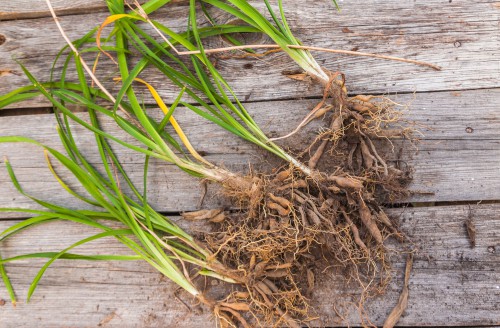
After that, place the containers in a final position that gets as much sun as possible. If you have a Daylily that produces pastel coloured flowers look for an area that gives partial shade sometime throughout the day because they tend to do better with a little shade.
Once they are in their final position, water well but slowly over the surface soil until the water has flowed through all of the potting soil and out the drainage holes at the bottom.
Regular Care
Watering
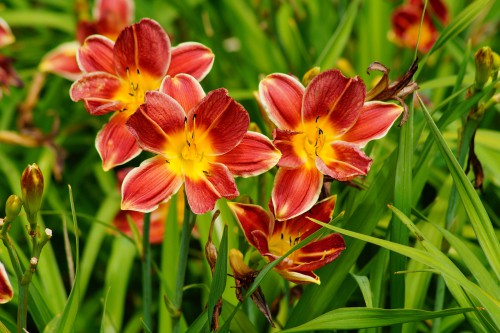
Once they are in their containers there’s very little you need to do. They will flower best if they are grown in evenly moist potting compost and this means that you have to water them whenever the surface soil is dry to the touch but don’t let them dry out too much, ideally moist but not waterlogged.
Every time you water, do so until you see the water flowing through the drainage holes, and then allow the pot to drain entirely before you put it back in a drip tray. You might need to water your Daylilies every day if you have very hot or windy weather, especially in the summer when they are actively growing.
Deadheading and Hemerocallis gall midge
Daylilies don’t require much pruning, although we recommend removing spent flowers. This makes them look better, as well as helps to prevent Hemerocallis gall midge infestations, which cause the buds to swell and die before opening. If you do notice this happening it’s not usually fatal to the plant but we recommend removing affected flowers.
Dividing plants
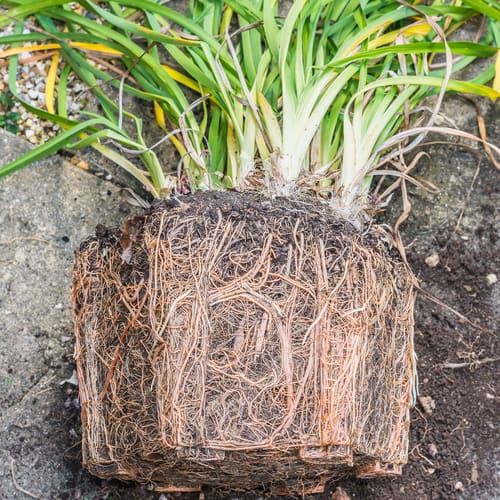
Every 4-5 years you may notice poor flowering and this is usually caused because the Hemerocallis have become root bound and at this point, they need to be removed from their pots, divided, and then replanted in new compost.
Winter protection
During the winter you need to give them protection against the frost. They will die back in areas that have very cold weather. You can leave your pots in a frost-free area like a greenhouse, garage, or garden shed until new shoots are produced in the spring or you can group all of the containers together and cover them with old blankets or horticultural fleece so that the containers with the roots stay warm.
Other related guides you may be interested in
Why are my Daylilies (Hemerocallis) not flowering?

